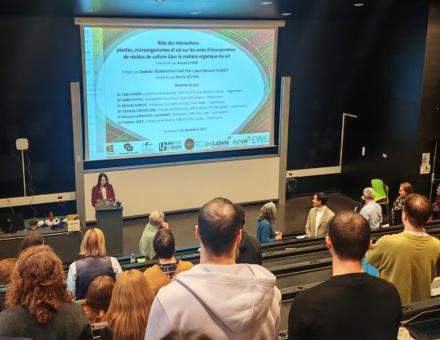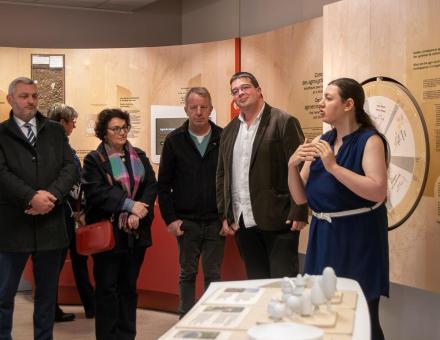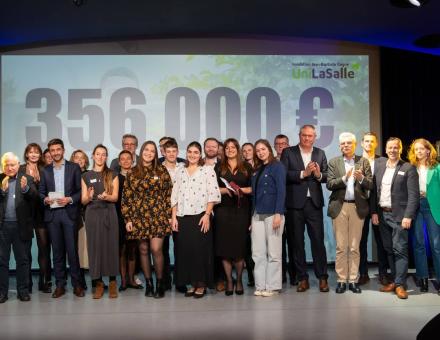In post-industrial cities such as Rouen, the historic coexistence between city and industry needs to be reinvented. The challenge is to reconcile the issues of industrial relocation, society's new expectations, and the requirements of the ecological transition, particularly in terms of urban greening.
Contemporary cities face new and seemingly contradictory challenges. First, there is a need to relocate industrial production closer to urban centers, but also the importance of rebuilding green spaces to improve residents' well-being and maintain biodiversity. Finally, land use must now be rationalized with a view to achieving “zero net land take.”
These paradoxical demands are all the more acute in industrial and post-industrial cities, where the question of the place of factories in the city arises.
To explore these challenges, we conducted interdisciplinary research in Rouen, an urban area facing these challenges. Our findings highlight the concept of “territorial requalification” and emphasize the fundamental condition for its success: that the urban territory be studied holistically, taking into account its geo-historical and environmental characteristics. These must be assessed at different scales using various sustainability indicators.
Post-industrial cities: a unique context
The term “post-industrial cities” refers to urban areas that have undergone significant industrial restructuring, which has transformed land use. These urban industrial areas therefore face complex challenges, but also offer potential for sustainability due to four characteristics:
- they have a large amount of available brownfield sites, which may however be polluted;
- new industries are emerging, but have different land requirements;
- urban density is high, with industrial and residential areas intermingling;
- the population is wary of, or even opposed to, industrial activities, while having strong societal demands, such as the creation of recreational areas (green spaces) or climate change mitigation measures (combating heat islands);
This specific context has several implications for these areas, each of which has its own particular characteristics. Due to the density of European cities and competition for land, brownfield sites – largely resulting from deindustrialization – cannot be allowed to occupy valuable space.
The redevelopment of these sites must therefore be used to combat urban sprawl. This will enable activities to be redensified and the “city on the city” to be rebuilt. But also the “factory in the city,” because there is a parallel need to relocate our industry in order to increase our sovereignty and reduce our external dependence.
However, this must take into account the challenges of a sustainable transition. To be more virtuous than in the past, this new industrial and territorial development must be considered from a sustainable transition perspective. It must also integrate the diverse expectations of the urban population (well-being, a healthy environment, employment, and the rejection of nuisances).
Those involved in land use planning, who often face suspicion from residents toward industry and government institutions, must therefore ensure that this historic coexistence between city and industry remains balanced.
Rouen and its industrial heritage
A pioneer of the industrial revolution in the 19th century, the Rouen metropolitan area is one of the cities affected by these challenges.
It stands out for its more than 400 urban brownfield sites. Historically located near the old town (now the city center), they have been overtaken by urban expansion and are now embedded in residential areas near the heart of the metropolitan area.
Based on this example, we have identified three fundamental conditions for sustainably redeveloping these urban industrial spaces and deploying appropriate green infrastructure:
- initiatives must take into account the geo-historical specificities of the territories,
- consider various scales of analysis,
- and be designed according to sustainability indicators that integrate the diversity of the actors involved.
The potential of urban brownfields
The research, conducted in Rouen, is based on geographic information system (GIS) tools, multi-criteria analysis tools, and modeling tools. It proposes a framework to guide land-use planners and researchers in identifying and prioritizing brownfields that could be converted into green infrastructure.
The model proposes a systematic approach to decision-making to avoid random distribution. It links the local characteristics of brownfield sites with environmental demands at the territorial level, for example when a former industrial area is being redeveloped through an urban agriculture project. This initial step helps to create different scenarios for brownfield redevelopment projects.
The next step is to identify stakeholders, urban agriculture project leaders, and neighborhood associations in order to involve them in the decision-making process. To do this, participatory methods are essential to respond to residents' requests for information and facilitate the participation of local actors.
For example, the “Le Champ des possibles” project involved local residents through an association in an initiative combining educational aspects (gardening) and recreational visits. Local investment was facilitated by a call for tenders from the city, with a view to creating shared governance.
Urban agriculture projects
Based on these findings, we were able to use sustainability indicators to examine a set of urban agriculture projects implemented between 2013 and 2018 in Rouen.
The aim was to identify the conditions under which they could be part of the redevelopment of brownfield sites and contribute to a sustainable transition.
We concluded that two main requirements had to be met: on the one hand, projects had to be based on sustainability indicators (economic, social, and environmental); on the other hand, project governance had to involve the various local stakeholders in the urban environment.
In this case, such redevelopment operations through urban agriculture of abandoned or underused industrial areas have generated benefits in terms of environmental and food education, integration of populations, and reduction of territorial divides. It also helps to develop biodiversity in renatured areas.
Reinventing links between cities and industry
Industrial areas, whether past (in the form of brownfield sites) or present, undoubtedly have a place in the city of tomorrow. But cities must take a more contextual approach to current local issues.
The example of Rouen shows that the links between the city and its industrial areas must constantly be reinvented, but that the contemporary situation places sustainability requirements at the forefront.
Urban area qualification operations require strategic and meticulous planning. It must be based on clearer and fairer decision-making processes which, in addition to technical and regulatory aspects, require a more bottom-up approach.
Approaches to the sustainable upgrading of industrial areas exist and are sufficiently generic to be replicated in other urban environments. The proliferation of such experiences in France and around the world demonstrates their potential.
About the authors
Loïc Sauvée, Director of the InTerACT research unit (Beauvais - Rouen), UniLaSalle
Fabiana Fabri, Associate Professor, Geography and Environmental Analysis, holder of the UsinoVerT Usines & Territoires chair, UniLaSalle







